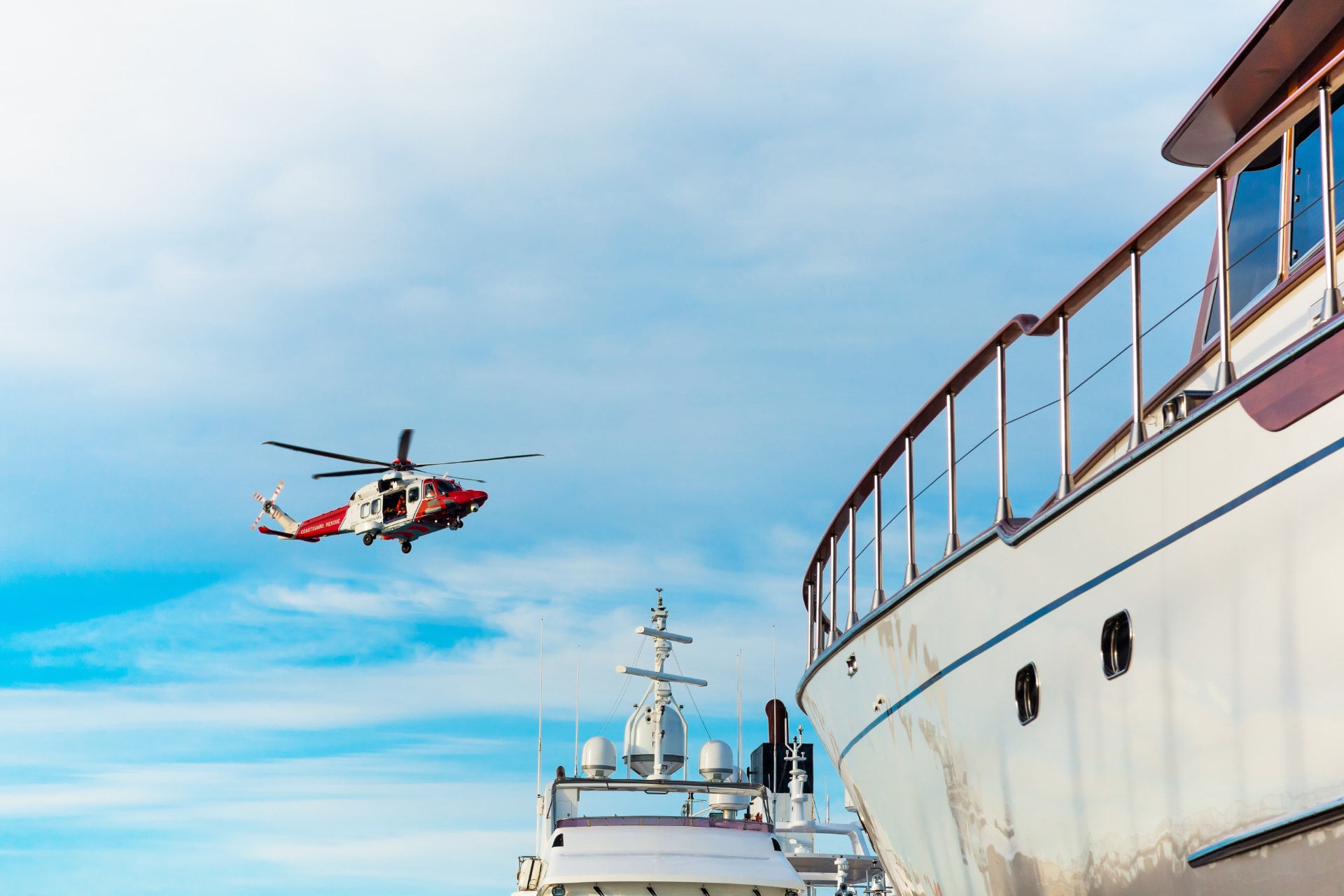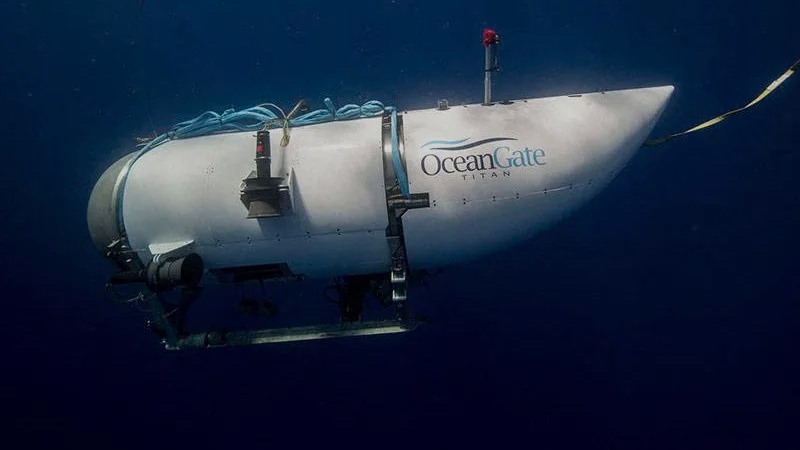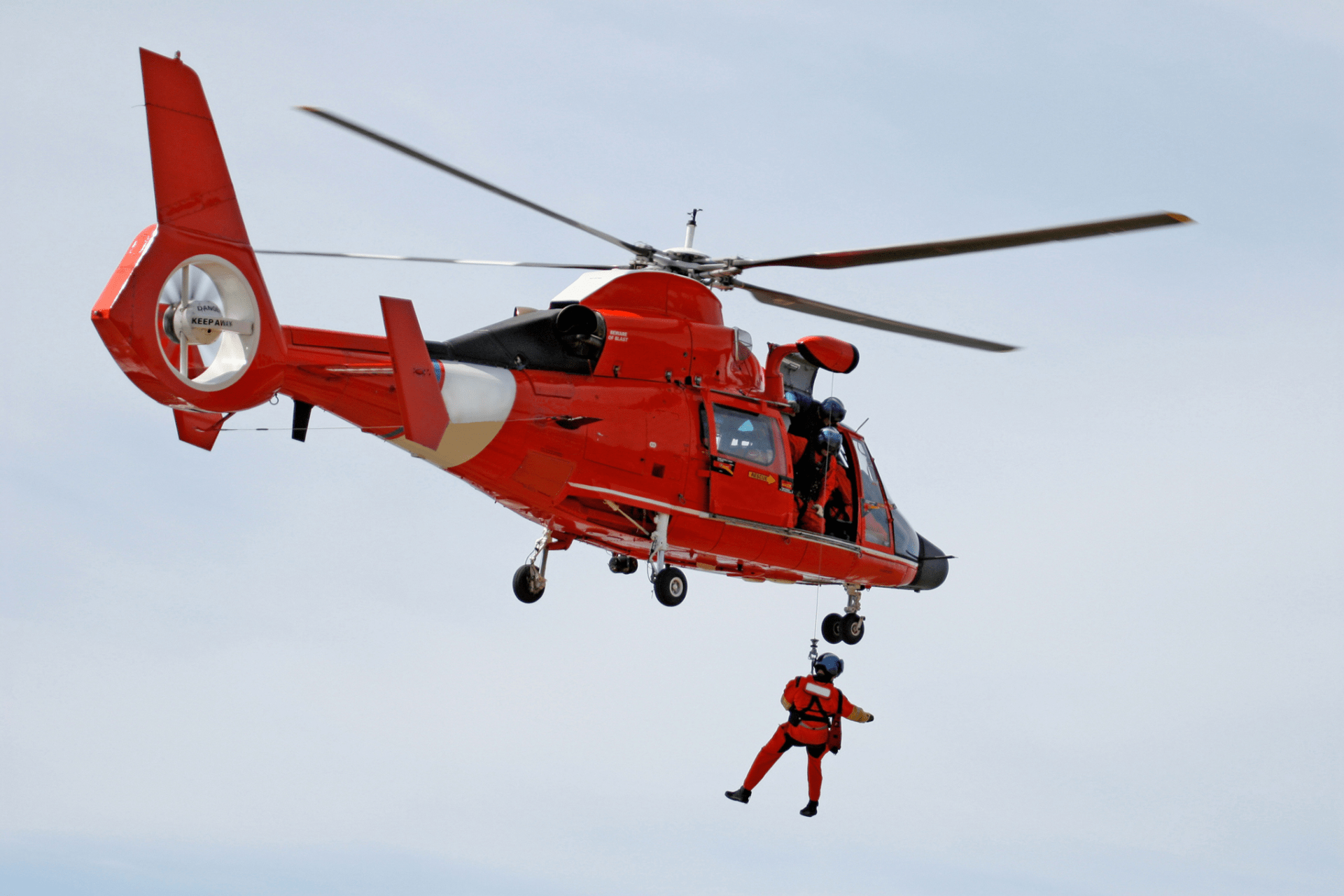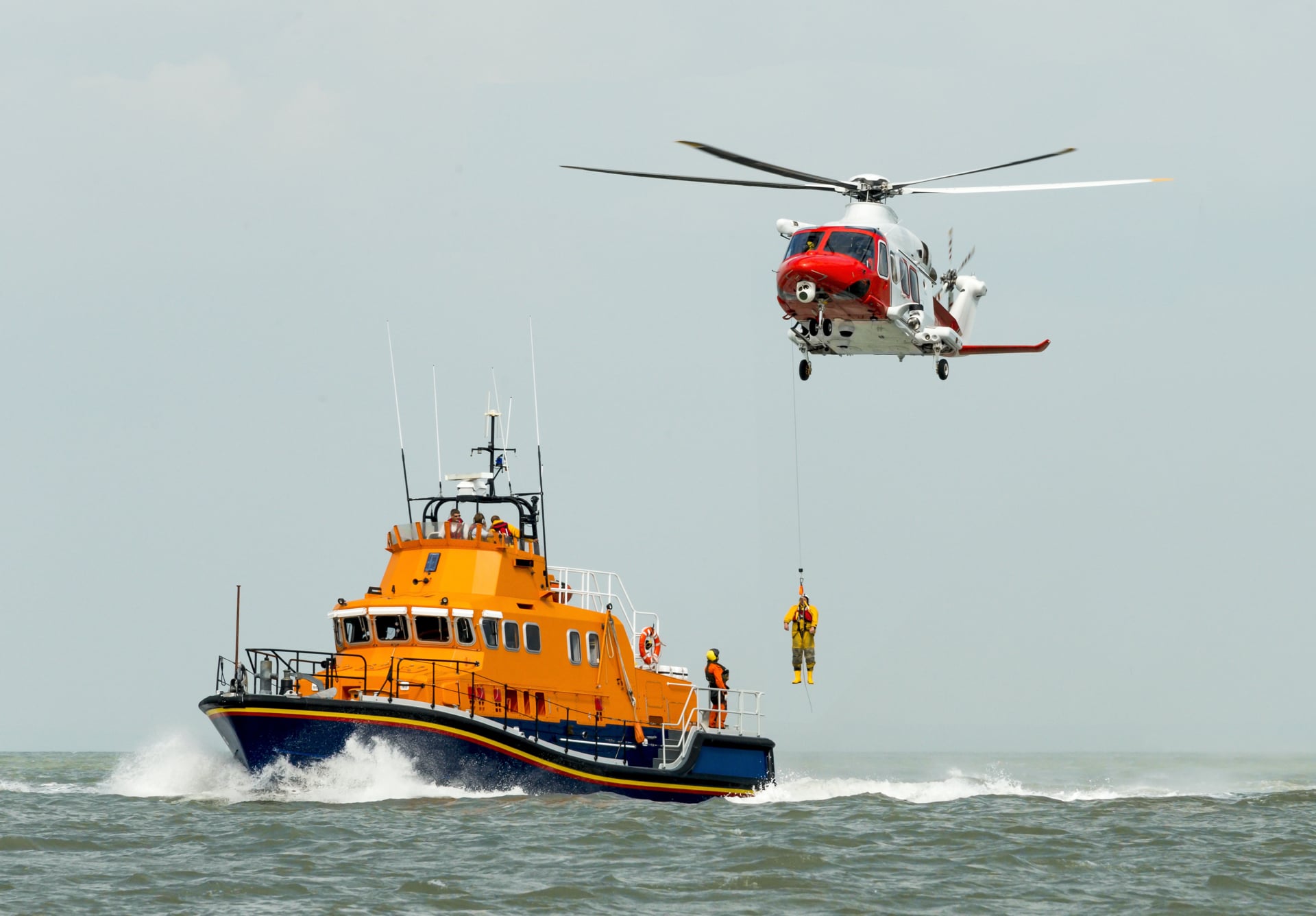On-Board Trainings: Building Skills and Familiarization
On-board trainings are crucial for smaller missions and focus on crew self-training. These sessions are primarily designed to familiarize the crew with the equipment and protocols specific to their rescue unit. By practicing on board, the crew develops essential skills, improves their coordination, and ensures they are prepared for emergency situations they may encounter during their operations.
Medium-Scale Exercises: Testing procedures and Team Coordination
Medium-scale exercises involve the participation of multiple units within an organization. These exercises present more demanding scenarios that challenge the skills and capabilities of the rescue units. By working together in simulated rescue missions, units can refine their response strategies, improve coordination, and strengthen their overall efficiency. These exercises serve as vital opportunities to assess the effectiveness of communication systems, equipment, and standard operating procedures.
Full-Scale Large Exercises: Collaborative Training on an International Level
Imagine the coordination, teamwork, and precision it takes to conduct a full-scale search and rescue exercise. It’s an event that calls upon rescue units from multiple nations, the pinnacle of SAR training. These events are more than just a demonstration of skill – they require careful planning, often years in advance, and offer a unique platform for international collaboration, knowledge sharing, and strengthening partnerships.
Take, for example, the Baltic SAREX. This remarkable event brings together more than 50 units from up to ten countries, all focused on improving their SAR expertise. The exercise involves both surface and air units, mirroring the wide range of situations SAR teams encounter.
Dynamic Mercy is another event that showcases the value of large-scale exercises. It brings together several nations to practice and improve their rescue techniques in an authentic environment. Participants have the opportunity to practice complex maneuvers and coordination across different units, honing their skills while contributing to ongoing improvements and innovation in SAR operations.
It’s important to note that search and rescue operations worldwide follow a common set of guidelines established by the International Maritime Organization (IMO). These guidelines ensure a standardized language and approach, making it easier for different countries to work together. These international exercises provide an excellent opportunity for networking and sharing best practices among participants.
While the scale of these exercises can vary based on the country and the specific scenario objectives, the focus always remains on achieving training results. These exercises typically progress through three stages: planning, execution, and feedback/evaluation. Each of these steps plays a vital role in the overall success and learning outcomes of the exercise.
The 5 W’s:
Essential questions for organizing exercises are: Who? Where? When? What? Why? These questions provide a general framework for structuring successful search and rescue exercises. By addressing these key aspects, planners can design exercises that enhance response capabilities, assess preparedness, and identify areas for improvement, ensuring valuable training opportunities for search and rescue teams.
The RSVP List: Deciding Who Takes Part
As we delve into the planning process, one pivotal question arises: Who gets an invite to the training exercise? The process starts with a careful review of potential trainees. It’s an exercise in comparison, weighing their current skills and conduct against the desired ones. This evaluation provides an understanding of the crew’s existing abilities, and pinpoints the key areas that the training should target for future growth.
So, who are the typical guests of honor at these events? The invitation often extends beyond just the rescue units. Other important attendees include authorities like customs and water police, lifeguards, and helicopters. Additionally, vessels are sometimes brought in to mimic distress situations, adding a realistic touch to the training scenario.
One unexpected, but crucial, group that often graces these exercises is mimes. They step into the shoes of a ship’s crew, lending an authentic feel to the training. Their role is far more than just an act; their portrayal helps to mirror the real-world challenges SAR units may face. We’ll be diving deeper into the fascinating role of mimes in SAR training in the next segment.
Mapping the Scene: The Importance of Location in SAR-Exercises
The grand production of a SAR training exercise starts with the selection of the perfect stage – the location. The planning phase begins with pinpointing a suitable site that enables the necessary infrastructure planning. A multitude of factors come into play while making this choice, such as the country, the home base of the units, and the unique geographical conditions that dictate the type of distress scenarios likely to occur.
Take, for example, the bustling English Channel, where you can spot a varied ensemble of vessels, including cargo ships, cruise liners, fishing vessels, sailing yachts, and motorboats. As you venture away from these busy ports and into more remote waters, the story shifts, and scenarios often involve pleasure crafts. Yet, in the dynamic world of SAR, exceptions are always around the corner, ready to surprise even the most seasoned units.
When rescue units from diverse backgrounds converge for an exercise, they bring along their unique sets of skills and experiences. Some units might be adept at dealing with medical evacuations due to frequent encounters in their operations. In contrast, others could be experts in person-in-water scenarios, having often rescued overboard sailors or swimmers in distress.
Positioning is another critical aspect of the planning phase. The units should be strategically placed at a realistic distance from the “distressed” area. In real-life situations, rescue vessels aren’t teleported to the scene – they need time to navigate the waters and reach the location. This journey allows the crew time to gear up mentally and physically for the mission ahead, thus adding an extra layer of authenticity to the training exercise.
It’s all about: The perfect timing
Planning a successful search and rescue event requires careful consideration of various factors, with timing being a crucial element. The selection of the event date is not only important for sending out invites to participants but also for weather-related concerns. Finding the ideal date can be a challenge as different seasons present their own unique circumstances.
The summer months, bustling with sailors and motor boats, pose high demand for assistance from local coast guards. However, the unpredictable winter weather can make certain training scenarios perilous. While the essence of search and rescue is to save lives in any situation, the safety of all participants during training sessions is paramount. It is vital to ensure that no one takes unnecessary risks that could lead to injuries.
Considering these factors, the most favorable seasons for search and rescue events are typically spring and autumn. These transitional periods offer a balance between favorable weather conditions and reduced risks.
Which leaves us with: What and Why?
Well the question of why can be answered quite easily. Obviously the idea of any exercise is to get better. No doubt.
But to answer what the objective of the exercise should be is a more interesting one. The more participants this exercise will have the more complex these exercises can be constructed. Let’s think of these exercises as a kind of live role play.
Imagine for a moment you are thrust into a dynamic, high-stakes scenario — a carefully crafted role play — where every decision you make carries weight. Within this exercise, you must balance the challenges of coordination, communication, managing meticulous documentation, navigating complex medical evacuation procedures, dispensing medical treatment, and orchestrating intricate search patterns to locate people or targets in the water. As a planner within the search and rescue organization, you’re constantly pondering which of these objectives requires your immediate attention and which can wait.
This is no ordinary theater, where actors merely mime their roles. No, this scenario involves real people, adding a layer of human unpredictability to the mix. Maintaining discipline is key, else crucial details could slip through the cracks. The specific details of the scenario may vary, but the common thread binding them is a call for help from a ship — or ships — carrying injured people.
The complexity of the situation escalates with the introduction of additional variables. Perhaps you’re dealing with multiple ships in distress. Did a solitary vessel encounter trouble, or was there a devastating collision between two ships? How many people — let’s call them “mimes” for the sake of this exercise — will you engage in this unfolding drama? What’s their medical status? Do they require immediate attention or can they wait?
Picture yourself juggling a scenario with multiple participants, forcing you to divide your attention between two simultaneous crises that need your coordinated response. Imagine one part of the crew missing, having abandoned the ship in a panic, launching a life raft, but leaving half their comrades behind.
To increase the intensity, visualize a collision where one vessel stays afloat, and the other tragically sinks, triggering an immediate search for people in the water. Why does it make these scenarios challenging, you ask? Well, because it’s not just about taking action; it’s about strategically allocating resources to best manage the situation. The initial phase, as you can imagine, is pure chaos.
Consider a situation with injured persons on one vessel and, concurrently, individuals in water — how do you allocate your rescue vessels? How many do you assign to locate the missing persons, and how many are needed to handle the medical crisis onboard? Once you’ve made your decisions, you’re tasked with relaying instructions to the vessels and helicopters at the ready, ensuring each knows their specific role.
All this while maintaining communication with your rescue coordination center, providing them with a comprehensive situation report so they can strategize and organize further action plans. This is the pulse-pounding reality of search and rescue operations, an intricate ballet of decision-making, teamwork, and unwavering dedication to saving lives.

From Chaos to Control:
So, how does one ensure that this meticulously crafted scenario doesn’t spiral out of control, deviating into an unexpected direction? This is where our “mimes” — the characters that add life and depth to the exercise — truly shine. They follow a script, bringing an element of predictability to an otherwise chaotic situation.
Upon arrival at the scene, the rescuers will connect with the mime playing the ship’s captain to get a thorough report of the incident. They will learn about the original number of crew members on board and if the ship faces immediate peril such as fires or water ingress that could necessitate evacuation over tending to the injured. The mime, in his role, would meticulously lay out the event’s timeline, guiding the rescuers through the story.
Imagine the pandemonium — crew members scrambling around, cries of pain filling the air, the unnerving sound of water slowly seeping into the vessel, the looming knowledge of people still missing in the water. Amid such chaos, some vital aspects like maintaining a comprehensive documentation or establishing regular communication with the rescue coordination center may fall by the wayside.
That is precisely why these scenarios are scripted — to highlight how easily one can get distracted and neglect other crucial tasks amidst the chaos. Coordinating these multifaceted aspects is no small feat, requiring not just skill, but also dedication and an unwavering spirit.
From Paper to Action:
Typically, a dedicated team – like SAR-Consulting, is assigned the responsibility of designing these scenarios. Their creations are guided by the specific learning objectives the organization wishes to emphasize for the year.
Constructed with the selected objective in mind, these scenarios are designed to funnel the participants into situations that facilitate training and mastery of these objectives.
However, the creation of these scenarios isn’t a one-size-fits-all process. It’s a flexible procedure that needs to be tailored according to various factors. The number of ships participating in the training, the crew size on each vessel – a detail of significant importance that we will explore later – and even the involvement of helicopters, all have a bearing on the scenario’s design.
Then there’s the decision on the location of the training – should it be confined to the sea, or should it extend to incorporate the process of transferring injured individuals to ambulance services on shore? You see, these scenarios can be as expansive as needed, involving all parties who would typically participate in real missions.
In this complex tapestry, each entity has a crucial part to play, whether it’s vessels, helicopters, or on-shore services. They are all intricately woven into the scenario, ready to train and adapt, and ultimately, become part of a well-oiled machine that saves lives when the real test comes.
Ensuring Safety Amid Intensity:
In these training scenarios, there’s a fascinating duality at play. You have the ensemble cast — individuals adopting the roles of captain and crew, performing their parts with commitment. Then there’s the actual captain and crew — a ‘safety team’ that ensures the ship’s wellbeing throughout the training, maintaining its integrity and ensuring it neither drifts astray nor collides with rocks or other hazards.
Essentially, there are two crews on board: one for show and the other for safeguarding. The latter, the real crew, stays largely inconspicuous, their presence like a whisper in the background since they are not actively participating. However, they always remain vigilant, ready to intervene at a moment’s notice should they observe anything that poses a serious risk to the actors, the rescuers, or the vessel itself.
Their intervention comes with a predefined code word, something like “no play, no play.” On hearing this, all pretense falls away, and the focus shifts to averting the imminent danger. The actors cease their performance, and every effort is made to ensure the safety of the individuals and the ship.
These scenarios, brimming with dedicated actors and high stakes, can get incredibly intense. Therefore, it’s of utmost importance to remember that, although a training exercise, real danger can still lurk in unexpected corners. Having a vigilant safety crew on standby, ready to shift gears from invisible observers to active interveners, is a critical aspect of conducting these immersive and impactful drills.
In Summary: The Important Role of SAR Exercise Planning
Reflecting on our exploration into the realm of maritime Search and Rescue (SAR) exercise planning, we’re left with a profound respect for the intricate choreography involved in preparing for the unpredictable.
Having navigated the who, what, why, where, and when of SAR exercises. Each decision – from participant selection to location choice, from training content to timing – is a calculated move in the high-stakes game of safeguarding lives at sea. At the core of this complex process is an unwavering commitment to safety.
In the unpredictable seas of SAR, preparation is paramount. Exercises are the crucibles in which innovation, resilience, and teamwork are forged. They not only prepare teams for real-world scenarios but also foster a culture of continuous learning and improvement.
So as we conclude our journey, let’s acknowledge the tireless SAR units worldwide. Their meticulous planning and training ensure they stand ready to turn the tide for those in distress. Behind every successful SAR mission, there’s a well-executed exercise, underscoring the vital role of preparation in lifesaving endeavors.
Do you plan Maritime Search and Rescue exercises? We’re here to help. Benefit from our extensive knowledge base and learn the latest trends, tips, and techniques to improve your SAR training programs. Let’s create safer seas together by planning successful, effective exercises.





